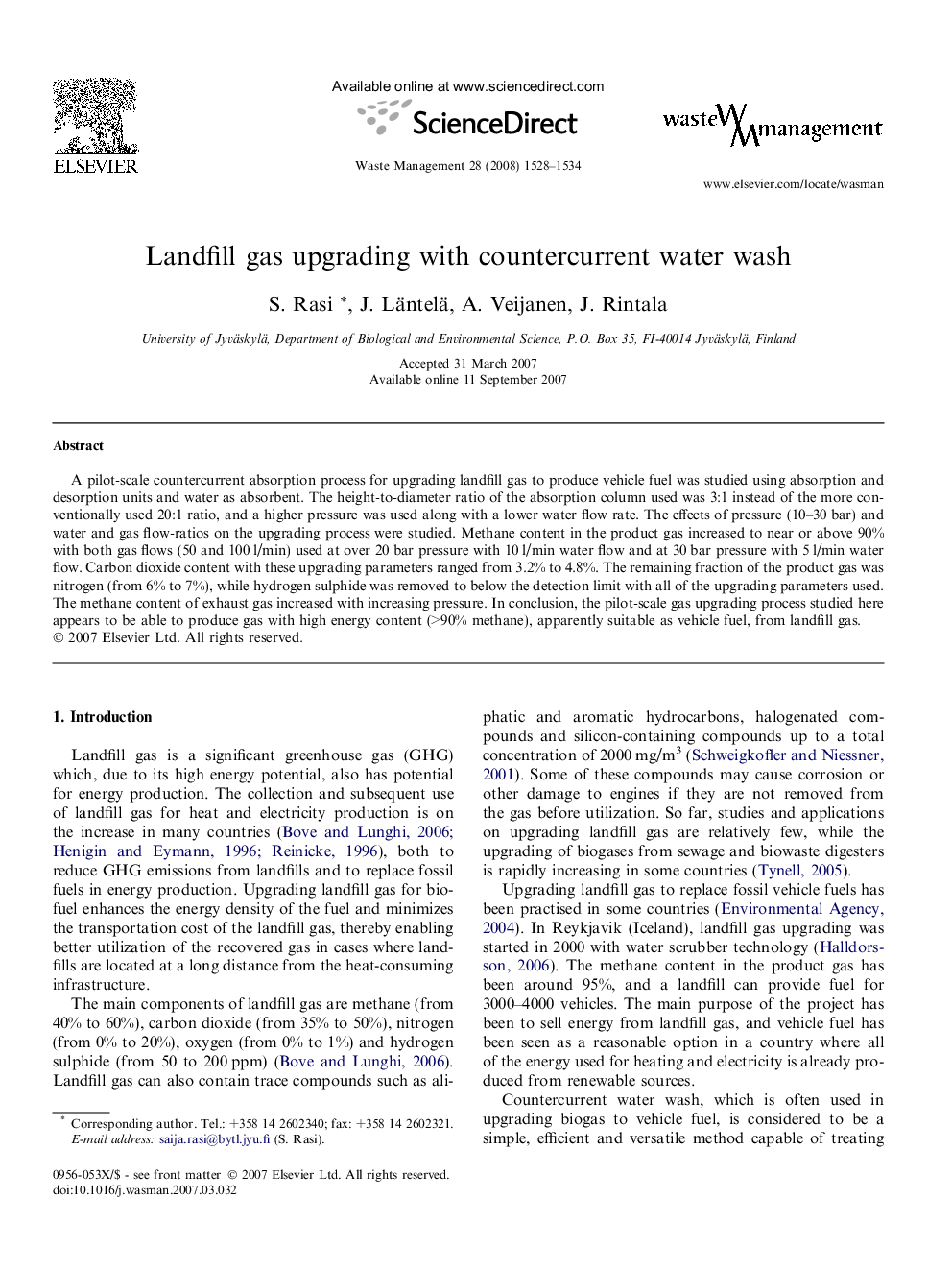| Article ID | Journal | Published Year | Pages | File Type |
|---|---|---|---|---|
| 4473065 | Waste Management | 2008 | 7 Pages |
A pilot-scale countercurrent absorption process for upgrading landfill gas to produce vehicle fuel was studied using absorption and desorption units and water as absorbent. The height-to-diameter ratio of the absorption column used was 3:1 instead of the more conventionally used 20:1 ratio, and a higher pressure was used along with a lower water flow rate. The effects of pressure (10–30 bar) and water and gas flow-ratios on the upgrading process were studied. Methane content in the product gas increased to near or above 90% with both gas flows (50 and 100 l/min) used at over 20 bar pressure with 10 l/min water flow and at 30 bar pressure with 5 l/min water flow. Carbon dioxide content with these upgrading parameters ranged from 3.2% to 4.8%. The remaining fraction of the product gas was nitrogen (from 6% to 7%), while hydrogen sulphide was removed to below the detection limit with all of the upgrading parameters used. The methane content of exhaust gas increased with increasing pressure. In conclusion, the pilot-scale gas upgrading process studied here appears to be able to produce gas with high energy content (>90% methane), apparently suitable as vehicle fuel, from landfill gas.
